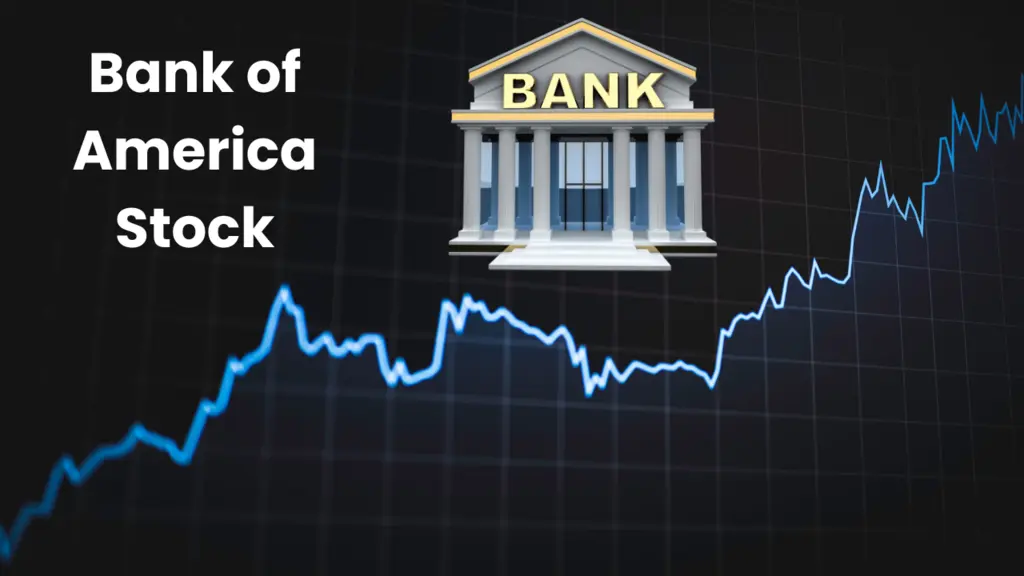Fintechzoom BAC Stock: Is It Right for You?
BAC is the stock of Bank of America Corporation, one of the largest financial organizations in the United States. Bank of America is a major player in the banking business as it provides many services, including personal banking and wealth management.
Fintechzoom BAC stock is a great way to study the bank’s performance and prospective growth in the financial markets. So, is Fintechzoom BAC stock buy or sell? Let’s find out.

Live Fintechzoom BAC Stock Price Index
What Do You Mean By BAC?
Bank of America Corporation (BAC) is one of the largest and most recognizable financial companies in the United States and the globe. Founded in 1904 in San Francisco, it has expanded through multiple mergers.
The bank provides a lot of financial services, such as:
- Consumer Banking: Provides services like checking and savings accounts and personal loans. Its user-friendly mobile and internet banking technologies make managing funds easier for millions of users.
- Investment Banking: Delivers advisory services for mergers and acquisitions. It serves many different clients, including corporations and governments.
- Wealth Management: Provides investment and wealth management services under the Merrill Lynch brand. These services help individuals and families manage their financial assets and plan for the future.
- Global Markets: Works in many overseas markets, offering clients foreign exchange and risk management.
Legacy and History of BAC Stock
The official Fintechzoom BAC stock symbol is “BAC,” and it has a long history that shows the evolution of modern banking in the United States.
Founding and Early Growth
Amadeo Giannini started Bank of America in San Francisco in 1904 under the name “Bank of Italy.” Giannini’s lending practice helped this small bank, which aimed to promote immigrant communities, grow quickly. The bank relaunched as “Bank of America” in 1930, making itself a key participant in American banking. By the 1950s, Bank of America had become the world’s largest commercial bank.
Public Listing and Expansion
In 1971, Bank of America started trading publicly on the New York Stock Exchange under the ticker symbol “BAC.” The public listing allowed the bank to access more capital, resulting in fast growth. Over the next several decades, the company expanded nationwide through investments and expansions.
Transformative Acquisitions
One of BAC’s defining moments was its 2008 purchase of Merrill Lynch, which occurred during the financial crisis. This investment offered Bank of America a large position in investment banking and wealth management. It also posed regulatory issues and impacted stock performance during the crisis.
Current Price of BAC Stock

According to the latest statistics, Bank of America Corporation (BAC) stock is trading at approximately $41.76 per share. The stock has fluctuated, which shows bigger market developments and investor attitudes toward major banking institutions.
Bank of America’s stock price is influenced by factors such as interest rates and overall economic circumstances in the United States. It is a financial asset that needs to be monitored closely. The Fintechzoom BAC stock price target differs by analyst but current 12-month predictions range from $42 to $53 per share.
Factors Affecting BAC Stock Performance
Several factors affect the performance of Bank of America stock (BAC) such as:
Interest Rates
Bank of America profits from higher interest rates because it can charge more for loans than it pays for deposits. When the Federal Reserve raises interest rates, BAC’s profitability and stability improve, which benefits the stock price. However, if interest rates climb too quickly, lending can be slowed,.
Economic Conditions
BAC’s performance is highly related to the overall health of the United States economy. Customer spending and borrowing rise as the economy grows which boosts bank earnings. But when loan defaults increase, then banking profitability can suffer during such a recession. Events like the COVID-19 epidemic showed how economic disruptions can cause extreme volatility in bank stocks.
Loan and Credit Quality
The quality of BAC’s loan portfolio is important. A higher rate of loan defaults can lower profitability, but a strong credit profile increases investor trust. Investors constantly monitor Bank of America’s credit quality reports and reserves for problematic loans.
Regulatory Environment
The banking industry is extensively regulated, and regulation changes can have a large impact. For example, harsher rules can raise operational expenses or limit a bank’s capacity to engage in profitable activities. The latest risk management and liquidity regulations impact BAC’s operating flexibility and costs.
Competition in the Financial Sector
Other big banks, such as JPMorgan Chase and Wells Fargo, can impact BAC’s market share and profitability. Innovations in digital banking and new financial products are needed to maintain competitive strength. Bank of America’s technology investment and customer service efforts help it stay relevant.
Predictive Market Trends of Fintechzoom BAC Stock

Here are some Fintechzoom BAC stock forecasts for market trends:
Interest Rate Trajectory
Bank of America’s stock is very sensitive to Federal Reserve interest rate changes. With the Fed’s continuous efforts to moderate inflation, any further rate hikes will boost BAC’s net interest revenue, increasing stock value. BAC’s profitability relies heavily on interest margins so unexpected cuts or a delay in rate hikes could limit growth.
Digital Banking and Fintech Competition
As traditional banking adapts to new financial technology, Bank of America has invested heavily in digital transformation to compete with fintech companies. Fintechzoom tracks how innovations and digital services impact BAC’s business as customer tastes evolve toward more digital possibilities. Growth in the bank’s digital user base can boost BAC stock’s attractiveness, especially among younger investors.
Economic Resilience and Loan Quality
As the US economy fluctuates, factors such as unemployment and customer spending will impact BAC’s loan performance and default rates. Analysts watch how BAC handles these economic constraints since strong loan quality and low default rates contribute to stock stability. An economic downturn or greater loan loss reserves can affect investor confidence.
Focus on Environmental, Social, and Governance
BAC has recently prioritized sustainability and ESG factors, which are becoming more relevant to investors. As BAC advances toward ESG targets such as carbon neutrality and social impact investments, it will attract socially conscious investors, driving higher demand for BAC stock.
Risk Management Strategies for BAC Stock

Effective risk management is important for firms that want to protect their assets and maintain stability:
Risk Identification and Assessment
The first stage in developing an effective risk management strategy is identifying potential risks ranging from market swings to operational disruptions. This means getting information about the probability and potential impact of each risk. Businesses use risk registers and SWOT analysis to evaluate and prioritize risks.
Diversification
Changing investments or operational locations can lessen the impact of some risks. In financial markets, diversifying investments across asset classes and industries decreases exposure to downturns in any one area. Diversification in operational contexts means purchasing goods from multiple sources or growing into multiple regions.
Insurance and Hedging
Insurance plans transfer some risk to an insurer, protecting the company from big financial losses caused by natural accidents and lawsuits. In finance, companies can use products to evade risks such as currency or commodity price swings. This allows them to lock in pricing or minimize volatility.
Regulatory Compliance and Audits
Regularly updating practices to comply with legal and industry standards helps prevent regulatory penalties while also securing operational compliance. Internal and external reviews expose processes, enabling organizations to fix them quickly.
Scenario Planning and Stress Testing
Simulations of numerous negative situations help businesses understand the potential effects on their operations and finances. Stress tests are very popular in finance, where banks consider their ability to withstand economic downturns. This strategy helps companies create emergency plans.
Implementing Internal Controls
Creating checks and balances within a business can help avoid fraud and inefficiencies. Build approval orders and conduct regular process and transaction reviews to get the most integrity and accuracy.
Regular Training and Communication
Educating staff on risk awareness and crisis management improves a company’s strength. A company should make sure that all team members understand their roles in risk prevention and crisis response. This practice promotes a proactive risk culture and benefits the company.
Conclusion
Fintechzoom BAC stock is a solid investment option in the financial industry due to the bank’s emphasis on growth through technological service advancements. For market observers, interest rates and regulatory changes greatly influence the stock’s performance.
If you are interested in its current status and prospects, Fintechzoom’s information on BAC stock gives you up-to-date information. BAC is an important company to monitor for those who want stability and possible long-term growth.
FAQs
Yes, the platform is known for providing information on many stocks to help investors stay informed.
BAC pays a yearly dividend of $1.04 per share. This is the total amount of dividends given to shareholders each year.
Bank of America has a consensus recommendation of Strong Buy based on thirteen buy ratings by analysts.
